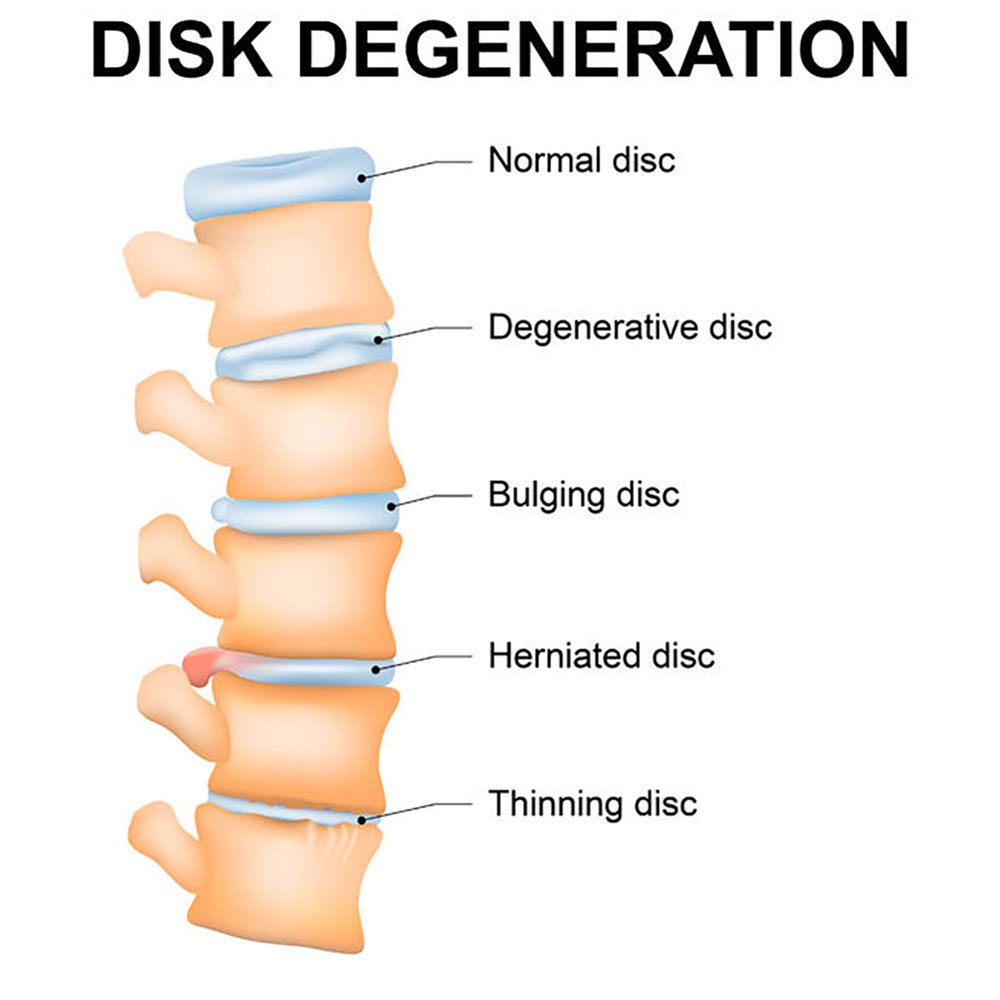What is Degenerative Disc Disease?
Degenerative Disc Disease is an age-related condition that happens when one or more of the intervertebral discs between the vertebrae of the spinal column deteriorates or breaks down, leading to pain. The rubbery intervertebral discs that act as shock absorbers between the vertebrae cushion the stress when the spine moves, bears weight, or helps the spine to bend. As people age, repeated daily stresses on the spine and occasional injuries including minor unnoticed ones can damage the discs in the back.
What causes Degenerative Disc Disease?
Causes of Degenerative Disc Disease include:
– Loss of fluid: The intervertebral discs of a healthy young adult consist of up to 90 percent fluid. With age, the fluid content decreases, making the disc thinner. The distance between vertebrae becomes smaller and it becomes less effective as a cushion, or shock-absorber.
– Disc structure: Very small tears or cracks develop in the outer layer of the disc. The soft and gelatinous material in the inner part may seep through the cracks or tears, resulting in a bulging or ruptured disc. The disc may break into fragments.
When the vertebrae have less padding between them, the spine becomes less stable. To compensate, the body builds osteophytes or bone spurs which are small bony projections that develop along the edge of bones. These projections can press against the spinal cord or spinal nerve roots. They can undermine nerve function and cause pain.
Symptoms of Degenerative Disc Disease
Many individuals seeking physiotherapy in Singapore do so because of persistent back discomfort caused by disc degeneration and related spinal instability.
The symptom of degenerative disc disease is a sharp or constant pain in the back and neck. Common signs include pain that is in your lower back, buttocks, or upper thighs. Pain also comes and goes. It can be nagging or severe and can last from a few days to a few months. The pain feels worse when you sit, bend, lift or twist but gets better when you move and walk. In some cases, this disease can lead to numbness and tingling in your arms and legs. It can also cause your leg muscles to become weak.
Degenerative Disc Disease Treatment
For Degenerative Disc Disease, the goal of physical therapy is to ease pain and stop more damage. Treatment plan will include manual therapy and exercises to improve movement in stiff joints and tight muscles that may be contributing to your symptoms. Specific stretching and strengthening exercises to improve movement in the joints and muscles of your spine, arms, and legs will be prescribed. As treatment progresses, functional training and lifestyle modifications will be taught to help relieve your pain and help you manage your condition on your own. If in doubt, please seek professional advice.
Physiotherapy for Degenerative Disc Management
For individuals with degenerative disc disease, physiotherapy may help manage symptoms by improving mobility, posture, and spinal support. Visit our Physio Clinic in Singapore to discover how therapy can be part of a long-term management plan.
Check out our popular articles: Diastasis Recti, Tight Back Muscles, Irritable Bowel Syndrome (IBS), Temporomandibular Joint (TMJ) Dysfunction, Tennis Elbow, Wrist Tendon Injury, Sciatica, Whiplash, Hernia, Herniated Disc (Slipped Disc).






